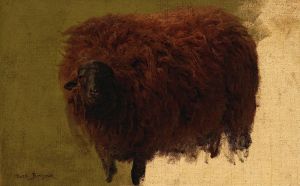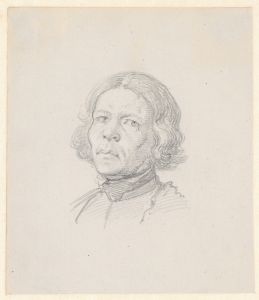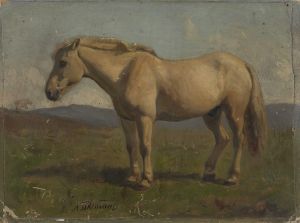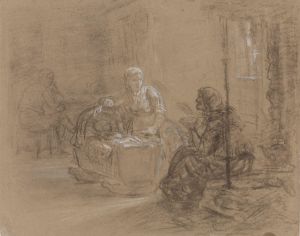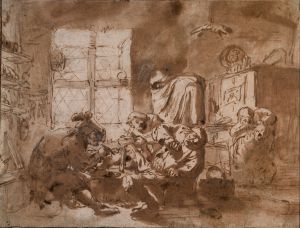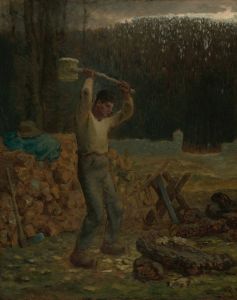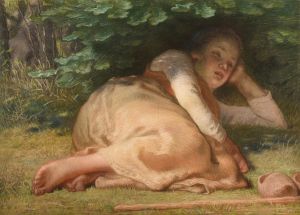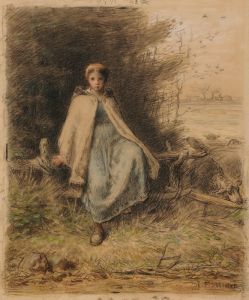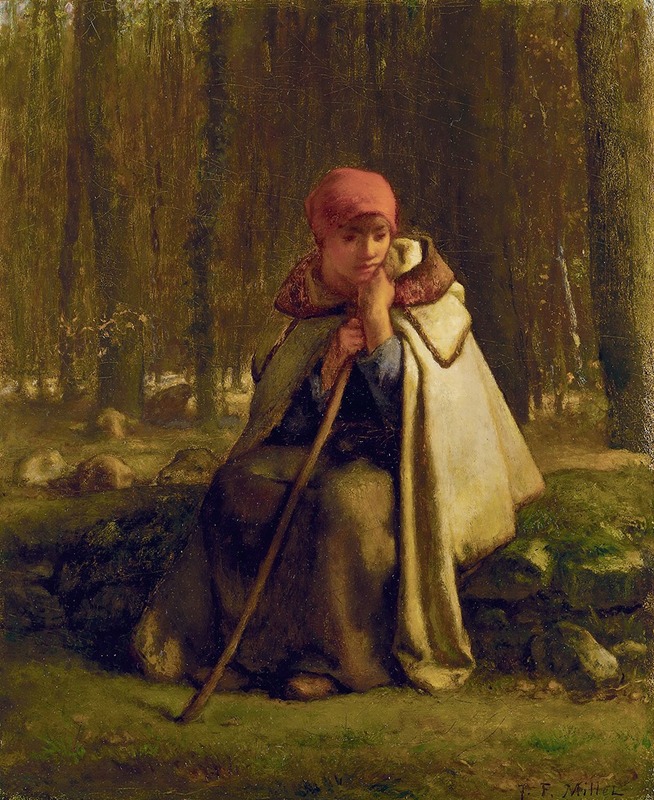
Seated Shepherdess
A hand-painted replica of Jean-François Millet’s masterpiece Seated Shepherdess, meticulously crafted by professional artists to capture the true essence of the original. Each piece is created with museum-quality canvas and rare mineral pigments, carefully painted by experienced artists with delicate brushstrokes and rich, layered colors to perfectly recreate the texture of the original artwork. Unlike machine-printed reproductions, this hand-painted version brings the painting to life, infused with the artist’s emotions and skill in every stroke. Whether for personal collection or home decoration, it instantly elevates the artistic atmosphere of any space.
Jean-François Millet's Seated Shepherdess is a painting that reflects the artist's deep connection to rural life and his dedication to portraying the dignity of labor. Millet, a prominent figure in the Barbizon School, is renowned for his depictions of peasant life, and this work is consistent with his focus on the everyday experiences of rural workers.
The painting features a seated shepherdess, a recurring subject in Millet's oeuvre, as he often depicted women engaged in agricultural or pastoral tasks. The figure is shown in a moment of rest, seated on the ground, with a serene and contemplative demeanor. Her clothing is simple and practical, emphasizing her role as a laborer in the countryside. The composition highlights the quiet dignity of her work and the harmony between the figure and the surrounding natural environment.
Millet's use of earthy tones and soft, diffused light in Seated Shepherdess underscores his commitment to realism and his ability to evoke the atmosphere of rural life. The painting reflects his admiration for the resilience and strength of the peasant class, a theme that resonated deeply during the 19th century, particularly in the context of the social and economic changes brought about by industrialization.
The exact date of the painting is not definitively documented, but it is consistent with Millet's body of work from the mid-19th century, a period during which he produced many of his most iconic pieces, including The Gleaners and The Angelus. Like these works, Seated Shepherdess demonstrates Millet's ability to elevate humble subjects to the level of fine art, challenging traditional notions of what was considered worthy of artistic representation.
Seated Shepherdess is part of a broader artistic movement that sought to capture the realities of rural life with honesty and empathy. Millet's work had a significant influence on later artists, including Vincent van Gogh, who admired his ability to convey the spiritual and emotional depth of ordinary people.
The current location of Seated Shepherdess is not specified in widely available sources, and further details about its provenance or exhibition history are limited. However, the painting remains an important example of Millet's contribution to 19th-century art and his enduring legacy as a painter of rural life.





